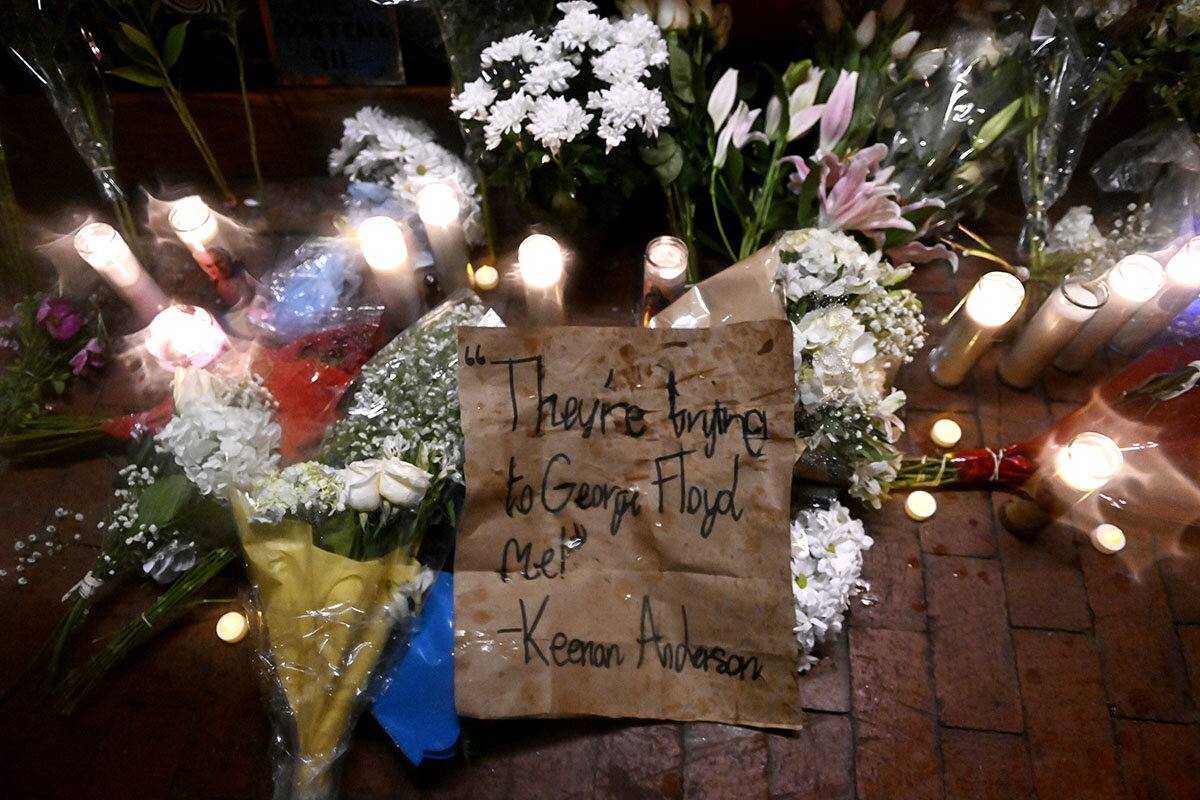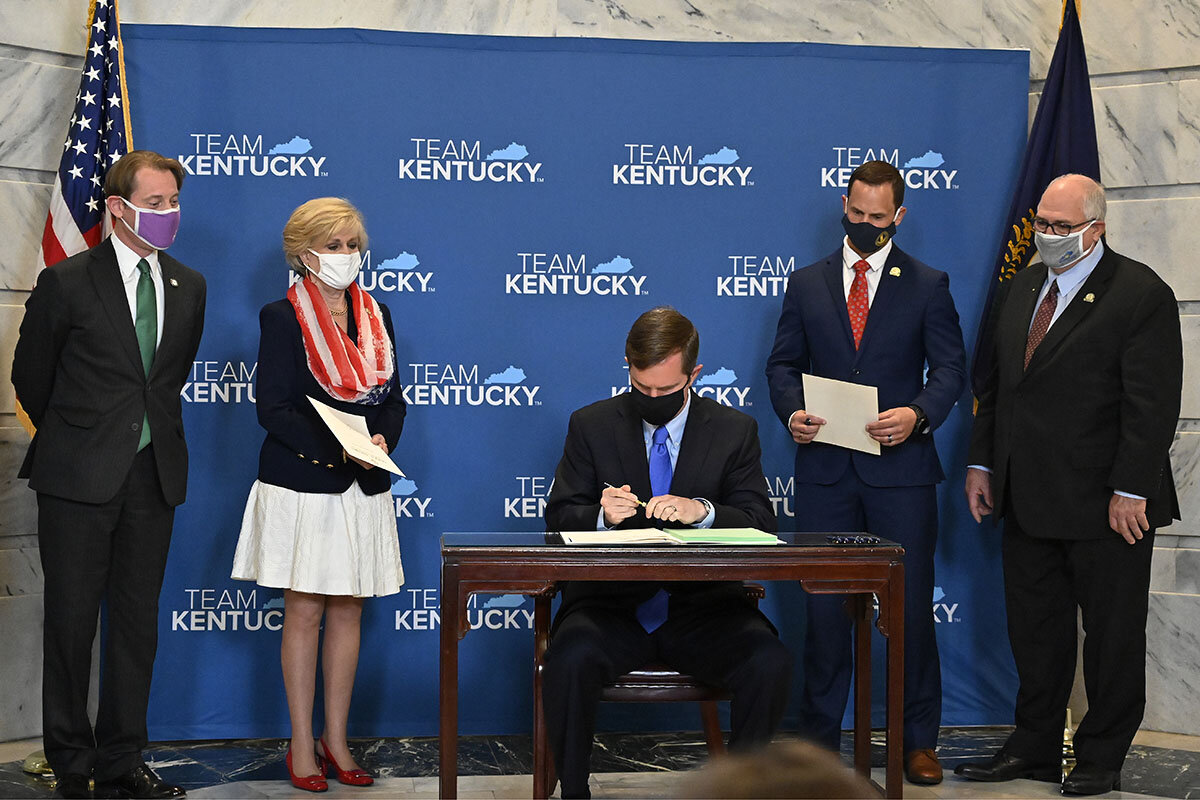George Floyd to Keenan Anderson: Is there progress in police reform?
Loading...
Many Americans have spent the better part of the last two years in recognition of George Floyd’s humanity. Tragically murdered in front of our eyes, he became the symbol of a movement.
Two weeks ago, George Floyd became a verb.
“They’re trying to George Floyd me” were the terror-filled words of Keenan Anderson in his encounter with the Los Angeles Police Department, during which he was detained and tased repeatedly. Hours later, he went into cardiac arrest and died.
Why We Wrote This
Keenan Anderson’s recent death prompted our contributor to consider whether calls for police reform after George Floyd’s murder have made a difference. Is the U.S. any closer to a more nuanced approach to policing?
A statement for Anderson on the website of the Digital Pioneers Academy, where he was a 10th grade English teacher, asked some of the same questions that were raised only a few years ago: “How could the police have de-escalated this situation? How are we going to stop losing our black boys and men to violence? How do we grieve and move forward as a community?”
During the midsummer of 2020, following Floyd’s murder in May, de-escalation turned into the language of defund. While “defund the police” became a polarizing phrase, the intent for many was more nuanced – reallocate some of the money for policing toward community-based solutions. In terms of mental health, one of the ideas proposed was to replace police with crisis teams.
The following November, Brookings issued a that laid out suggestions for “shifting away from police as first responders” when dealing with mental health crises. The report cited a number of alarming stats; chief among them were death rates resulting from police encounters:
The in 2015 that people with untreated mental illness are 16 times more likely to be killed during a police encounter than other civilians approached or stopped by law enforcement. in the American Journal of Preventive Medicine, using data covering 2009-2012, found that “one in five (21.7%) legal intervention deaths were directly related to issues with the victim’s mental health or substance-induced disruptive behaviors.”
Help appeared to be coming a few months later when President Joe Biden signed into law the American Rescue Plan Act, which allotted for state and local mental health and substance use services, school-based mental health programs, and workforce training.
How is it, then, that the social justice reforms urged in 2020 and the ideations of think tanks have been largely forgotten? The answer can be found in policy making decisions on the federal level, along with statewide decisions that manifested themselves in various municipalities.
This past May, Forbes reported that two years after Floyd’s murder, no profound police reform had been passed. Several states – including Utah, New Mexico, Illinois, and Kentucky – enacted laws to improve police oversight or reduce police violence, but national efforts like the Justice in Policing Act named after George Floyd hit a snag in the Senate, never making it to the president’s desk. Further, an apparently seemed to cool the fiery midsummer movement of 2020, whether through Mr. Biden’s and the Democrats’ rebuking of “defund” messaging, or renewed attempts to pour money into policing.
In May, Mr. Biden himself city governments to spend remaining COVID relief funding on policing, outlining a shift in priorities. Pandemic relief didn’t just provide breaks for governments; it provided breaks for the populace, financially and otherwise. The signal that funds earmarked for relief should be funneled back to police was exactly the opposite of what activists and concerned communities demanded only a few years ago.
According to Mapping Police Violence, 2022 saw in America, making it the deadliest year for police violence since the group’s tracking began in 2013. A look at the number of deaths from shows that the “racial reckoning” after Floyd’s death never truly manifested itself in a reduction in the number of fatal police encounters. Nearly half of the incidents last year were the result of nonviolent offenses.
The nature of Anderson’s death and his kinship with Black Lives Matter co-founder Patrisse Cullors only adds to the cruel irony of this tragedy. According to an on a police statement accompanying the release of officers’ body camera footage, Anderson flagged police down for help and was met by members of the Los Angeles Police Department, an organization with a noted history of police corruption and malpractice. The ensuing struggle ultimately cost Anderson his life, and the victim’s frantic nature left many wondering how the result might have differed if he had been engaged by a mental health crisis team instead of the police.
We’ll never know, but what we do know is that roughly a quarter of Los Angeles’ overall budget is in the police, and an additional $87 million was allotted to the LAPD during the city’s most recent budget talks.
It’s hard to imagine that “George Floyd” would become a verb after a few short years, yet that seems to be the case. The scariest part is that his name isn’t even an action verb – it’s sadly inactive.






